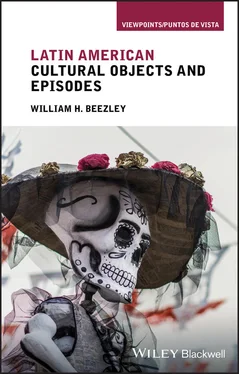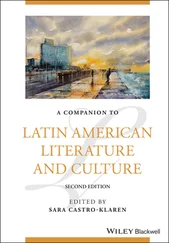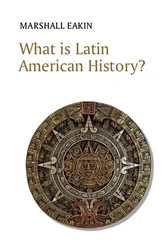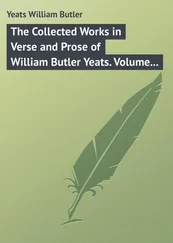10 9Mauricio Belmonte Pijuán, Polenta: Familias italianas en Bolivia (Editorial Gente Común: Ambasciata d’Italia in La Paz, 2009), p. 25. See Gabriella De Ferrari’s delightful memoir of growing up in her Italian family in Tacna. Her father, Armando, was the honorary consul, and after the monarchy was abolished in 1946, he hosted a party for town elites each June 2, the Day of the Republic. Gringa Latina: A Woman of Two Worlds (Boston: Houghton Mifflin Company, 1995).
11 10Joaquín Blaya Alende, El Progreso Italiano en Chile (Santiago: Imprenta La Ilustración, 1921), pp. 441, 445, with photographs. Selections are included in the online essay at http://www.italianosenchile.cl/documentos/documentos‐tacna.html.
12 11Alfonso Díaz Aguad and Elías Pizarro Pizarro, “Algunos antecedentes de la presencia italiana en la ciudad de Tacna: 1885–1929,” August 29, 2014. http://www.italianosenchile.cl/documentos/documentos‐tacna.html.
13 12Archivio Storico Borsalino Indice, municipal library, Alexandria, Italy, Mazz 144, 6, 1915–1919.
14 13The word “ciola” (without the “h”) does not translate into the English language as it is the proper name of the hat in question, which in Peru is named “Chullo.” Dario Pavan, archivist, Alessandria Community Library, Italy, to the author, March 28, 2019.
15 14“Esclusiva Borsalino. L. A. Galoppo & Galoppo e Ormezzano,” Alexandria, Italy, Mazz 144, 6, 1915–1919.
16 15Belmonte, “Los sombreros Borsalino de Ludovico Galoppo,” pp. 179–182, 60.
17 16This seems possible because of the development of smuggling after the plebiscite in 1921 that divided the towns of Tacna and Arica, carried on daily by the women of Tacna, who might well have had knowledge of the practice between Peru and Bolivia. They might even have worn the hats they were smuggling. De Ferrari, pp. 71–72.
18 17One travel guide account claims the first shipment of hats was given away to the women. Claudia Looi, “Bowler Hats and the Cholas of Bolivia,” http://travelwritingpro.com/bowler‐hats‐cholas‐bolivia/.
19 18http://www.bloganavazquez.com/2010/02/07/el‐sombrero‐bombin‐borsalinoy‐las‐mujeres‐de‐bolivia/.
20 19See the blog entitled “El Mundo Cervantinos,” the Hispanic World seen through the eyes of some Italians, “Las cholitas luchadoras” (November 15, 2013). The origin story of the railroad workers is repeated on this website. http://mundohispanoloscervantinos.blogspot.com/2013/11/las‐cholitas‐luchadoras.html.
21 20Lesley Gill, Precarious Dependencies: Gender, Class, and Domestic Service in Bolivia (New York: Columbia University Press, 1994), p. 106.
22 21Belmonte, p. 89.
23 22Archivio Storico Borsalino Indice Mazz 969 Fascicol 13, Rappresentanti cessati dal 1929 al 1936‐c/provv:
24 23 http://www.hathistory.org/borsalino/.
25 24http://www.made‐in‐italy.com/italian‐fashion/designers‐and‐brands/borsalino.
26 25https://www.nytimes.com/2019/05/29/obituaries/emma‐stebbins‐overlooked.html. Liza Bakewell provided this reference.
27 26Lucius Beebe, “The Hat that Won the West,” Deseret News, Salt Lake City, Utah (October 27, 1957), https://news.google.com/newspapers?nid=336&dat=19571026&id=xQQpAAAAIBAJ&sjid=PkgDAAAAIBAJ&pg=7036,5636283&hl=en. Beebe said that he examined thousands and thousands of photographs of westerners for a book and that resulted in his conclusion.
28 27The Guardian (October 8, 2016).
29 28Don Anderson, “Bowled Over by a Hat Beloved by Orangemen,” Belfast Telegraph (March 3, 2015), https://www.belfasttelegraph.co.uk/opinion/columnists/bowled‐over‐by‐the‐history‐of‐a‐hat‐beloved‐by‐orangemen‐30380950.html.
30 29http://www.bloganavazquez.com/2010/02/07/el‐sombrero‐bombin‐borsalinoy‐las‐mujeres‐de‐bolivia/.
31 30Gian Paolo Gamba, Panizza company, email to the author, March 22, 2015.
32 31“Las remembranzas de Mario Nosiglia,” Belmonte, pp. 223–224. There are some slight differences in this essay with Michael Powell and Jürgen Horn, “A Tour of Sucre’s Hat Factory,” http://bolivia.for91days.com/2011/06/12/a‐tour‐of‐sucres‐hat‐factory/.
33 32http://www.made‐in‐italy.com/italian‐fashion/designers‐and‐brands/borsalino.
34 33Haroldo and Flávia de Faria Castro, “Los Mil y Un Sombreros de la Cultura Boliviana,” Geomunco, 8, no. 6 (1984), p. 566.
35 34http://movingtoecuador.blogspot.com/2009/10/ecuadorian‐hats.html; http://www.ecuadortravelsite.org/traditional_costume.html.
36 35“Hats Off to Bolivians – From Derbies to Helmets, They’re Tops,” Los Angeles Times ( January 25, 1987).
37 36Brittany Robinson, Stars on the Ceiling Travel and Adventure, http://sotcblog.com.
38 37Haroldo and Flávia de Faria Castro, “Los Mil y Un Sombreros de la Cultura Boliviana,” Geomunco, 8, no. 6 (1984), pp. 573–576.
Конец ознакомительного фрагмента.
Текст предоставлен ООО «ЛитРес».
Прочитайте эту книгу целиком, купив полную легальную версию на ЛитРес.
Безопасно оплатить книгу можно банковской картой Visa, MasterCard, Maestro, со счета мобильного телефона, с платежного терминала, в салоне МТС или Связной, через PayPal, WebMoney, Яндекс.Деньги, QIWI Кошелек, бонусными картами или другим удобным Вам способом.












